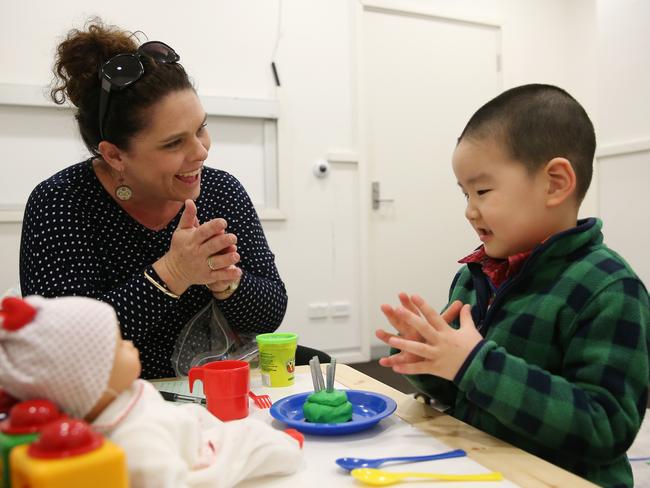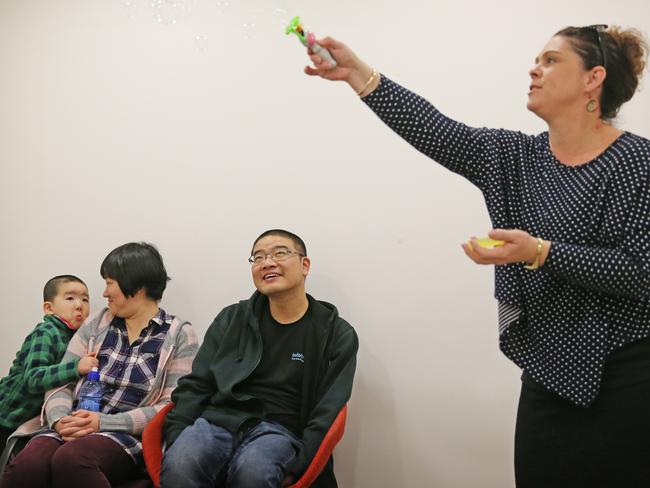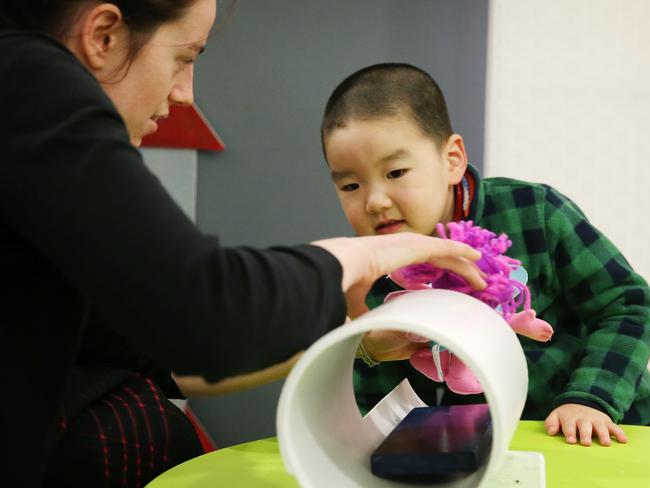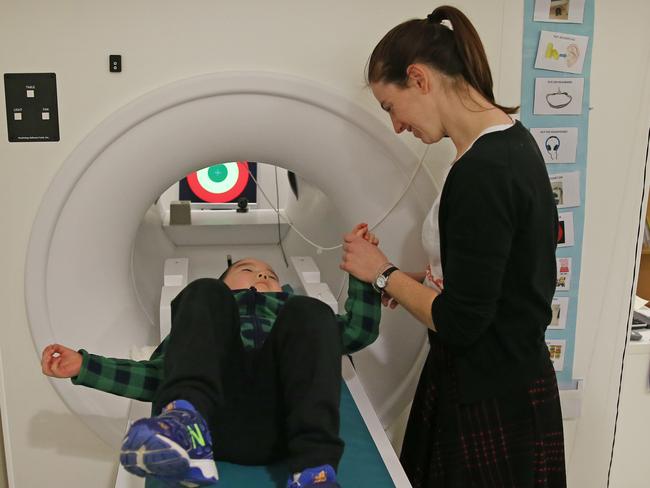Autism and oxytocin: University of Sydney work probes hormone’s effects on symptoms
EXCLUSIVE: Love might finally prove a cure for autism, if researchers from the University of Sydney can succeed with their world-first research into a hormone dubbed the “love drug”.

NSW
Don't miss out on the headlines from NSW. Followed categories will be added to My News.
- Boys with autism who took suramin improved in language
- Autistic students in mainstreams schools highlights volatile issue
LOVE might finally prove a cure for autism, if researchers from the University of Sydney’s Brain and Mind Centre can succeed with their world-first research into a hormone dubbed the “love drug”.
In what is the most sophisticated medical trial of its kind in the world, principal research fellow Professor Adam Guastella and his team are looking at the effects of oxytocin on autism.
Oxytocin is a naturally occurring hormone that drives humans to bond with each other. Even hugging a friend releases oxytocin.

Previous BMC studies have revealed autism sufferers experienced a significant reduction in symptoms after five weeks of oxytocin.
Children in the study made more eye contact and showed an increased social responsiveness.
“There are no treatments for the core symptoms of autism,” Prof Guastella, a clinical psychologist, said.
“The current suggested treatments are repurposed old drugs for schizophrenia.
“This trial could end in either a targeted drug treatment using oxytocin, or a sophisticated behavioural therapy guided by neuroscience.”
Three-year-old Charles Shao is one of 160 kids aged 3-12 in the trial who are undergoing MRIs, blood analysis, social interaction, heart rate and eye tests.


In one test, kids’ heart rate, eye contact and frustration levels are measured while they interact with both toys and researchers blowing bubbles.
Charles’ mother Lena Wang, 36, has been told there is only a 15 per cent that this treatment could help her son but she believes it is worth a shot.
“It is very stressful every day and I only have a break when I go to sleep,” the North Shore mother said of her son, who has severe (level three) autism.
“Charles is three and is non-verbal. He does not know how to play with toys properly and only likes to play on his own.”


The incidence of autism is increasing with more sophisticated diagnosis of both children and adults.
Rates of autism spectrum disorder have gone from one in 150 people in 2000 to one in 68, according to the US Centers for Disease Control and Prevention.
Autism is a condition which prevents different parts of the brain from co-ordinating with each other.
The trial started in April and will finish in late 2018.
AUTISM: WHAT IS IT?
* Autism spectrum disorders (ASDs) are lifelong developmental disabilities characterised by marked difficulties in social interaction and communication, and restricted and repetitive interests and behaviours.
* The word ‘spectrum’ is used because the range and severity of the difficulties people with an ASD experience can vary widely. Asperger’s syndrome is part of the spectrum.
* About one in 100 Australians are on the autism spectrum — around 230,000 people. It is four times more common in boys than girls.
* There is no single known cause — and no cure, although early intervention in a person’s life can minimise the impact on their functioning.
* People with the condition can present with a mix of indicators, which might include inexplicable tantrums, unusual interests or attachments, unusual movements such as hand-flapping or toe-walking, extreme difficulty coping with change.
* They might be afraid of everyday sounds, find eye contact uncomfortable, respond to certain sounds but ignore a human voice and avoid social contact.
* The cliche of all people with autism being Rainman-type geniuses is not true but they can be exceptionally creative, able to solve complex problems and have outstanding memory for detail.
* Albert Einstein, Mozart, Stanley Kubrick and Andy Warhol are all thought to have lived with autism. Celebrities who have the condition include actors Daryl Hannah and Dan Aykroyd, singer Susan Boyle, Courtney Love, musician Ladyhawke and American Idol singer James Durbin.


